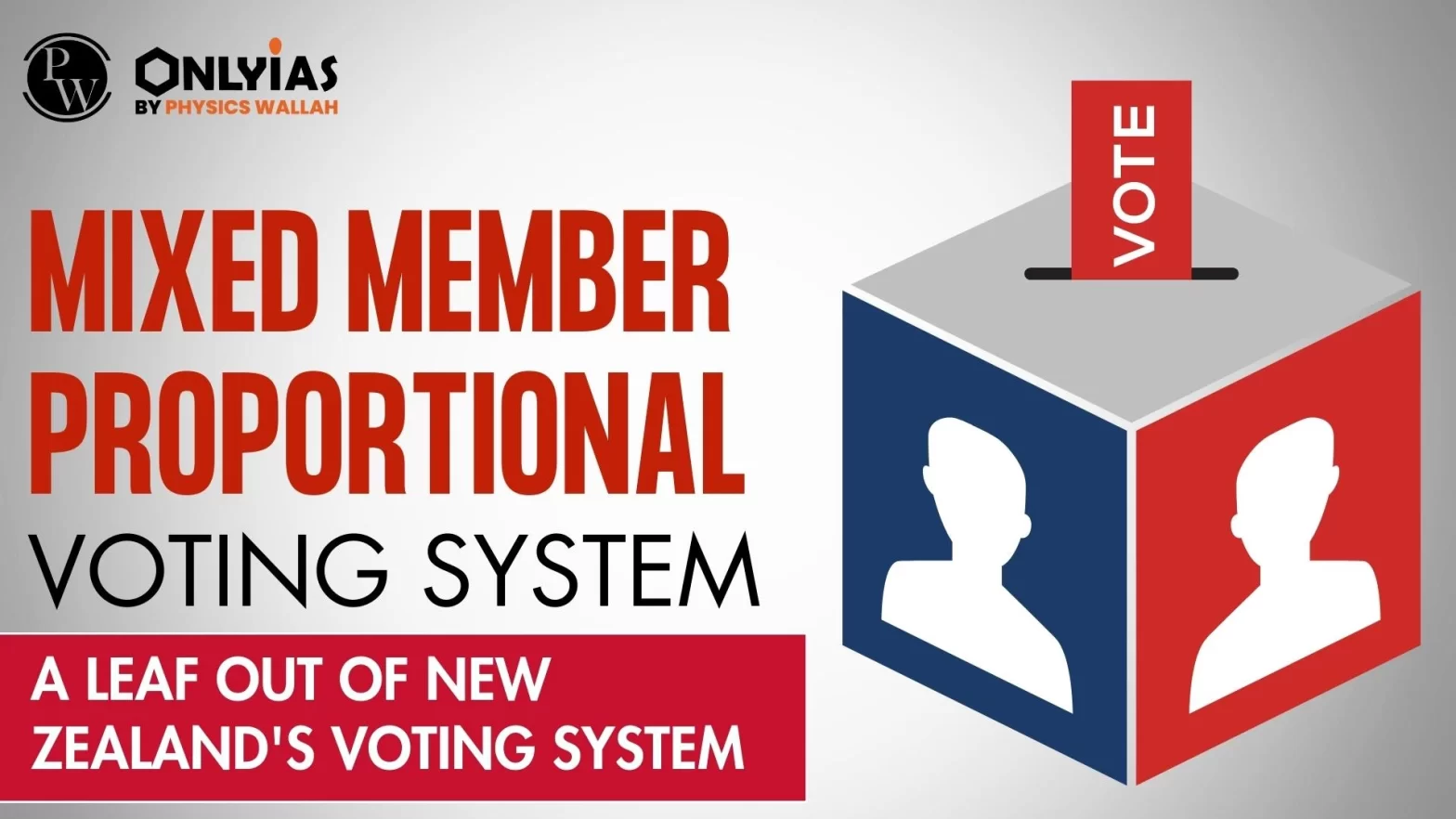Context:
- This article is based on an Editorial “A leaf out of New Zealand’s voting system” which was published in the Hindu. Odisha’s unique set-up of concurrent Lok Sabha and State Assembly elections demonstrates the electorate’s differentiated political choices. It means, voters cast both their votes on the same day, but split their voting patterns.
| Relevancy for Prelims: Split Voting System and Mixed Member Proportional Voting System or MMP Voting System.
Relevancy for Mains: Mixed Member Proportional (MMP) Voting System, Its associated advantages and challenges |
What is the Split Voting System?
- Voters’ Preference: It is a system that allows voters to choose candidates based on merit while ensuring that their party preference determines legislative composition such as in New Zealand.
- Allocation of Votes: Allocating votes to two different parties is a split vote.
- Followed In: India follows the first-past-the-post voting system, while New Zealand uses the mixed member proportional voting system.
What is the Mixed Member Proportional Voting System?
- Simultaneous Two Votes: Under Mixed Member Proportional Voting System or MMP Voting System, voters cast two votes- a ‘party vote’ that determines the overall composition of the Parliament and an ‘electorate vote’ to elect a local MP for their geographical constituency.
- Representation: It allows a voter to choose a candidate from a different party if they don’t like the local candidate from their preferred party.
- The electorate vote does not alter the overall party representation in Parliament.
- As per the Electoral Commission of New Zealand, 31.86% of votes in 2020 were split votes, from 27.33% in 2017.
- Switch Seats: In a switch seat, voters pick a candidate from one party but give their party vote to another, meaning the elected local MP comes from a party that doesn’t secure the majority of party votes.
What advantages of the Mixed Member Proportional Voting System?
- Accountability: It allows for more localized accountability for elected representatives.
- Focused: It allows more policy focus.
- Inclusiveness: It improves representation for women, indigenous communities, differently abled people, and other deprived groups.
- Before Mixed Member Proportional Voting System’s introduction, New Zealand had only a 21% representation of women in 1993; now, 51% of MPs are women.
- Democracy: It enhances democracy by providing voters to express a diverse range of political preferences.
- Flexibility: It provides flexibility, as both party and candidate are chosen by voters in a mutually exclusive manner with no effect on each other.
- Youth Empowerment: After the introduction of Mixed Member Proportional Voting System, the average age of an MP in New Zealand has considerably declined. It was 47.3 years in the 2020 elections. This has been possible because of the low entry barrier for young politicians due to split voting choices.
Also Read: Scope of Approval Voting in India
Conclusion:
The adoption of a Mixed Member Proportional Voting System, inspired by New Zealand’s successful model, could offer India a more accountable, inclusive, and flexible electoral framework.
| Prelims Question (2017)
Consider the following statements:
1. In the election for Lok Sabha or State Assembly, the winning candidate must get at least 50 percent of the votes polled, to be declared elected.
2. According to the provisions laid down in the Constitution of India, in LokSabha, the Speaker’s post goes to the majority party and the Deputy Speaker’s to the Opposition.
Which of the statements given above is/are correct?
(a) 1 only
(b) 2 only
(c) Both 1 and 2
(d) Neither 1 nor 2
Ans: (d) |
![]() 6 Nov 2023
6 Nov 2023

